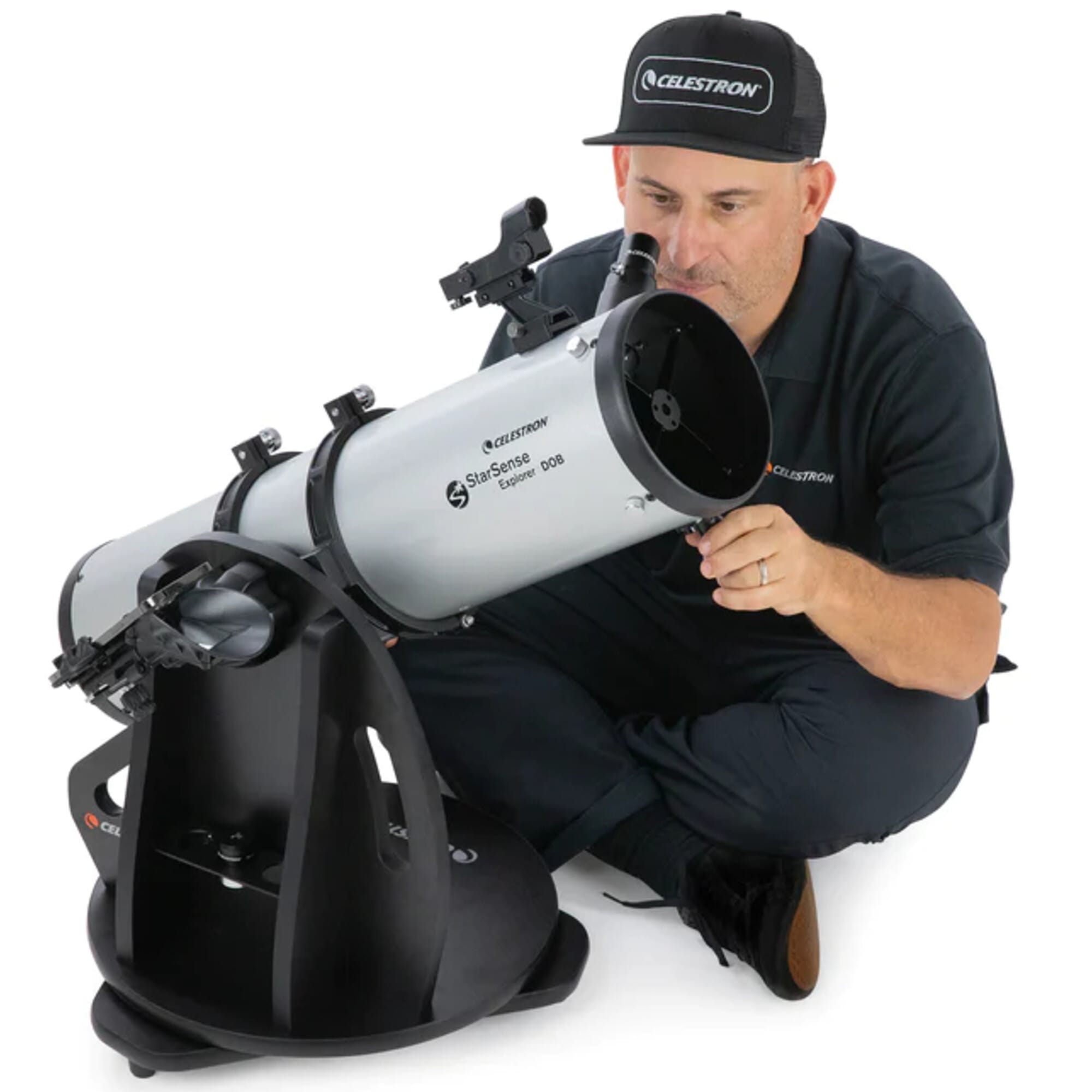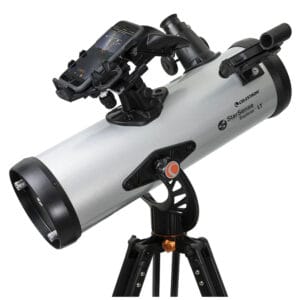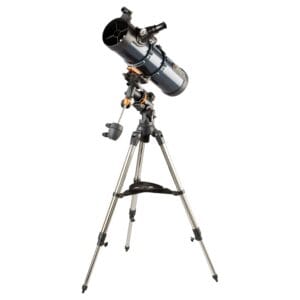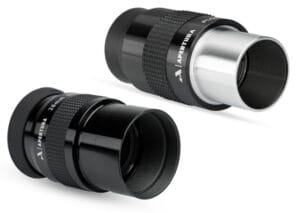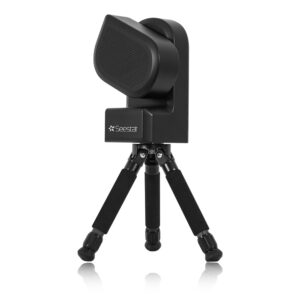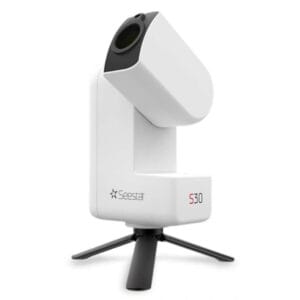Choosing a beginner’s telescope might seem simple, but many people get lost in the options. What makes a telescope suitable for beginners? In this article, we explain why a Dobsonian telescope is often the best choice for beginners and what to look for in your first purchase.
What Makes a Good Beginner’s Telescope?
A good beginner’s telescope should do three things:
- Give you quick successes (like seeing moon craters or Saturn’s rings)
- Be user-friendly without technical frustrations
- Fit your budget without compromising on optical quality
Most experts on forums like Reddit, Cloudy Nights, Telescoop.nl, and Astroforum repeatedly mention one type as the best starter model: the Dobsonian telescope. But why?
Why a Dobsonian is the Ideal Beginner’s Telescope
The Dobsonian is known as the “best value for money” telescope. The design is simple: a Newtonian reflector telescope on a stable wooden mount. No motors, no electronic frills. Just point and observe. That makes it perfect for beginners.
The optical performance of a Dobsonian is impressive, especially compared to tripod models in the same price range. You’re looking at the universe directly with a large mirror, without lenses causing light loss. The operation is intuitive: up, down, left, right, like moving binoculars, but more powerful.
Most models have an aperture of 130 to 200 mm. With this, you’ll see more than just the moon. Think Jupiter with its moons, Saturn with its rings, and under dark skies even nebulae like Orion or galaxies like Andromeda. With a bit of practice, the night sky becomes recognizable – and that’s where the magic begins.
Want to know what you can see with it? Check out our blog page and discover how Jupiter looks through a telescope!
Manual Searching or Help via your Phone?
Not everyone wants to venture out with a star chart. Fortunately, there are two clear directions you can choose as a beginner:
1. Prefer help via an app?
Then the Celestron StarSense Explorer Dobsonian 130/650 is a smart choice. This telescope combines the classic Dobsonian setup with an app that guides you to celestial objects via your phone. No motors, but digital assistance for pointing. It’s an ideal mix of analog viewing and digital convenience.
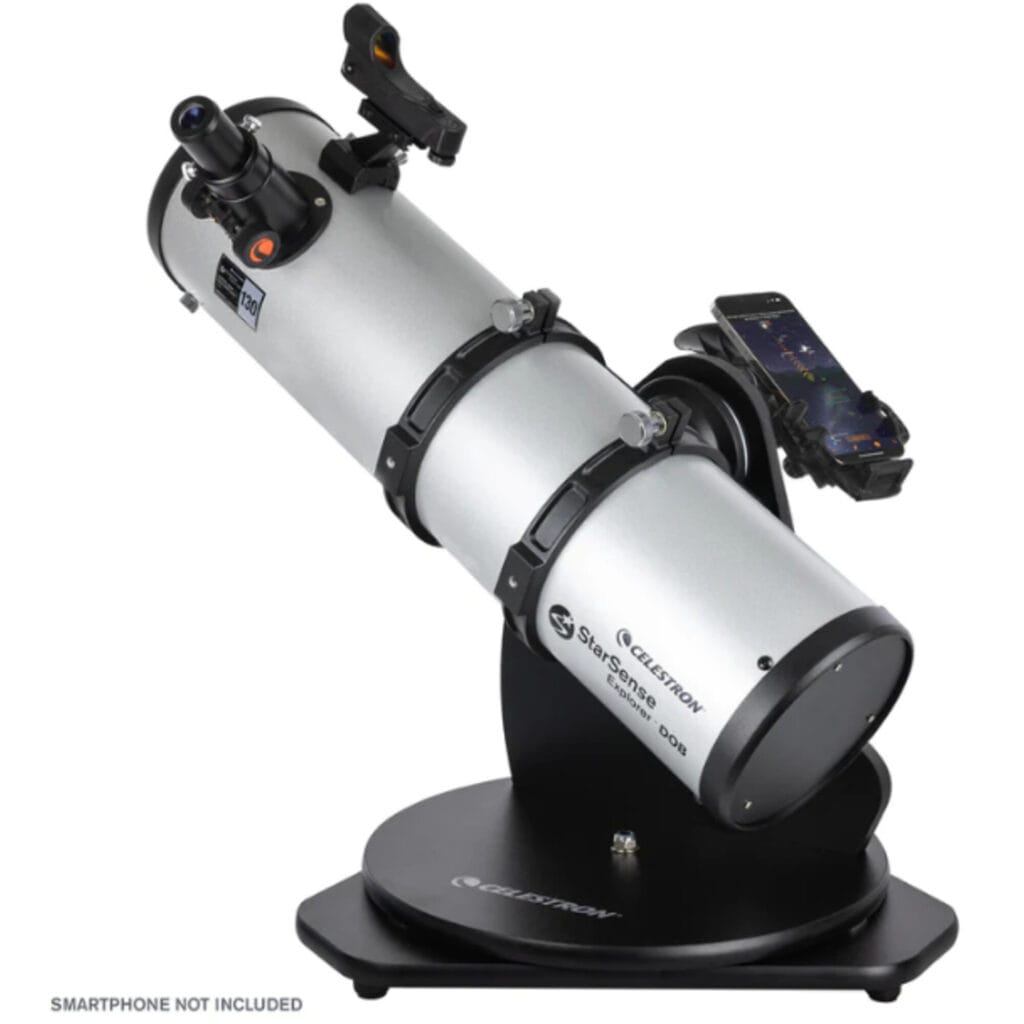
2. Prefer to discover on your own?
If you’d rather learn star-finding the traditional way, choose the Sky-Watcher Heritage 130/650 or 150/750. These compact tabletop models are light, powerful, and perfect for beginners who want to really learn the art of “star hopping”. Combine it with a reflex finder like the Telrad finder we offer, and you’ll find objects surprisingly quickly even without experience.
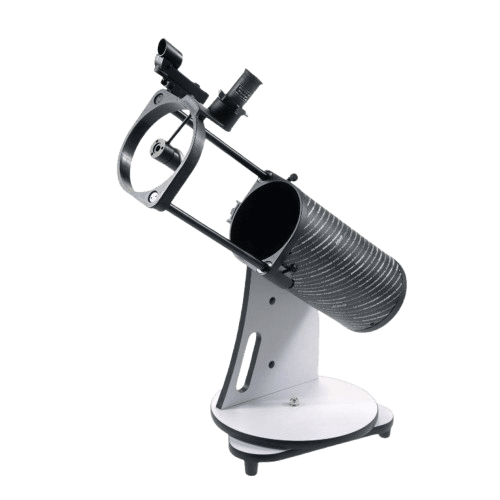
Both choices are good. It mainly depends on how you want to start: guided or exploratory.
What You Can See with a Beginner’s Telescope
A 130 to 200 mm telescope shows you surprisingly much. The moon reveals shadowy craters and mountain ranges. Jupiter shows its cloud bands and four largest moons. Saturn amazes almost everyone at first sight with its rings. Even the brightest nebulae and galaxies are visible as subtle, gray-blue patches. Not the colorful photos like in NASA images, but visible with your own eyes.
Note: light pollution plays a major role. You’ll see less from a city than from a dark location, but even from your balcony, the moon or Jupiter is impressively bright. This doesn’t apply to planets though, as light pollution has virtually no effect on them.
What to Avoid as a Beginner
Many beginners make the same mistake: they buy a telescope based on marketing. Words like “500x magnification!” or “includes 5 eyepieces!” sound attractive but often lead to frustration. A wobbly tripod, unusable lenses, and blurry images mean such a telescope disappears into storage after one viewing. Better choose a solid entry-level model, with or without digital assistance, and a limited number of good accessories that truly add value.
Dobsonian or Smart Telescope?
More and more beginners are choosing smart telescopes like the Seestar S50. These models automatically find objects and take photos directly via your phone. You don’t have to do anything manually. Ideal if you mainly want visual enjoyment and value sharing on social media. But: you learn less about the sky itself, and you no longer have an optical eyepiece to look through. It’s a different experience – it depends on what you want.
A classic beginner’s telescope like a Dobsonian offers that real observation feeling. You see directly with your eyes what’s in the sky, learn to recognize objects, and build skills that come in handy later with larger telescopes or astrophotography.
Which Beginner’s Telescope Do We Recommend?
At Telescoop.nl, the following models are proven favorites:
- Sky-Watcher Heritage 130/650 – lightweight, powerful, and competitively priced
- Celestron StarSense Explorer Dobsonian 130/650 – manual pointing with digital assistance
- GSO Dobsonian 200/1200 Deluxe – maximum performance for those ready to invest
- Seestar S50 – fully automated and app-controlled for those who prefer photography
These telescopes have been carefully selected based on community advice and our own customer experience.
Conclusion: a Beginner’s Telescope should Inspire, not Frustrate
The right beginner’s telescope lets you admire the moon in the first five minutes. And after a few evenings of star hopping, you’ll feel at home under the sky. Whether you choose traditional searching or smart app assistance: if the image is stable and the optics are clear, you’ll want to go outside again and again. That’s where the hobby really begins.

